Back in FDPW today experimenting with my mice images which I traced onto acetate and cut out to use in monotypes. It was rather fun inking up the perspex plates with the background colour, then inking up the mice and deciding on their placement in the image. I used a small square plate, then a larger rectangular one to include the cheese for the mice to cavort on and around. Finally I tried using two of the square plates, trapping the two mice forever out of reach of the cheese! The only downside was the cleaning up of all the rollers at the end.
1 Comment
I tried printing all four of my mice collagraphs over the weekend and was encouraged by the results, patchy as they were. The wiping of the plates is critical as there's really not a lot for the ink to cling to - way too easy to wipe it all off, especially on the light areas which perversely appear dark on the plate. Just when I think I have the knack, the next one disappoints. Such are the joys of printmaking. Perseverance is the key as always. Here are all four in various states...
I thought I'd post the plates for my recent mice Collagraphs to give an idea of how this new version works. Rather than being stuck onto the plate the various Lascaux products are simply painted onto the plate, so there is no relief element. Rather it's a case of some holding ink and some not, with variations in between. They are inked as intaglio and the wiping is the tricky part. It is remarkably easy to wipe off too much ink, leaving a pale image. Or of course, too little wiping which leaves a dark image with little detail. Very difficult to see what is left on the plate - perhaps stronger lighting would help. The first proofs of two of these plates are on my "Collagraphs" page.
This week I've been working from my sketchbooks, transforming drawings of mice done last weekend into collagraphs. I prepared four MDF plates, filing the edges to protect the press and blankets, then sealing them with a few coats of hard ground (Lascaux). The images were developed using pastelground for the dark areas and stop out for the lighter parts. I was reasonably pleased with the intial proofs, though as always more work is required! The first two were printed using Burnt Umber, the other two with a combination of the Umber and Raw Sienna. Anyway, have a look at the results on my Collagraph page and see what you think.
|
| Colin Beaumont Artist Printmaker |
|


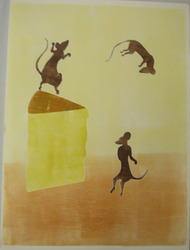



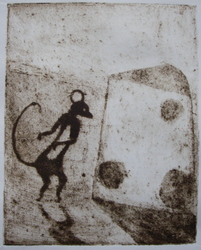
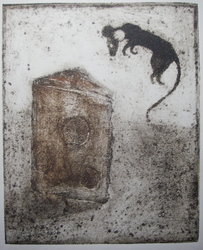
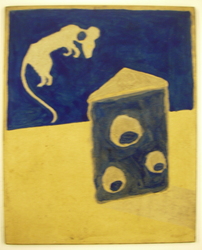
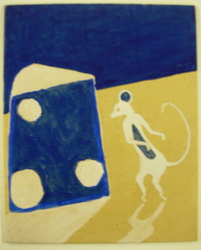
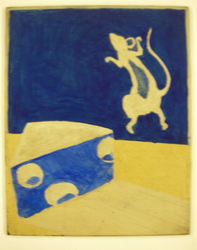

 RSS Feed
RSS Feed